Rubber Boas: The Pythons of the Rockies (only cuter)
If you’re wandering around the Greater Yellowstone Ecosystem and hoping to spot one of the region’s most elusive creatures, you might find yourself staring at the ground, wondering if that’s a snake or just a particularly lumpy twig. Congratulations! You may have just encountered the rubber boa (Charina bottae), a snake so charming and unassuming that even snake skeptics might be tempted to say, “Aww.”
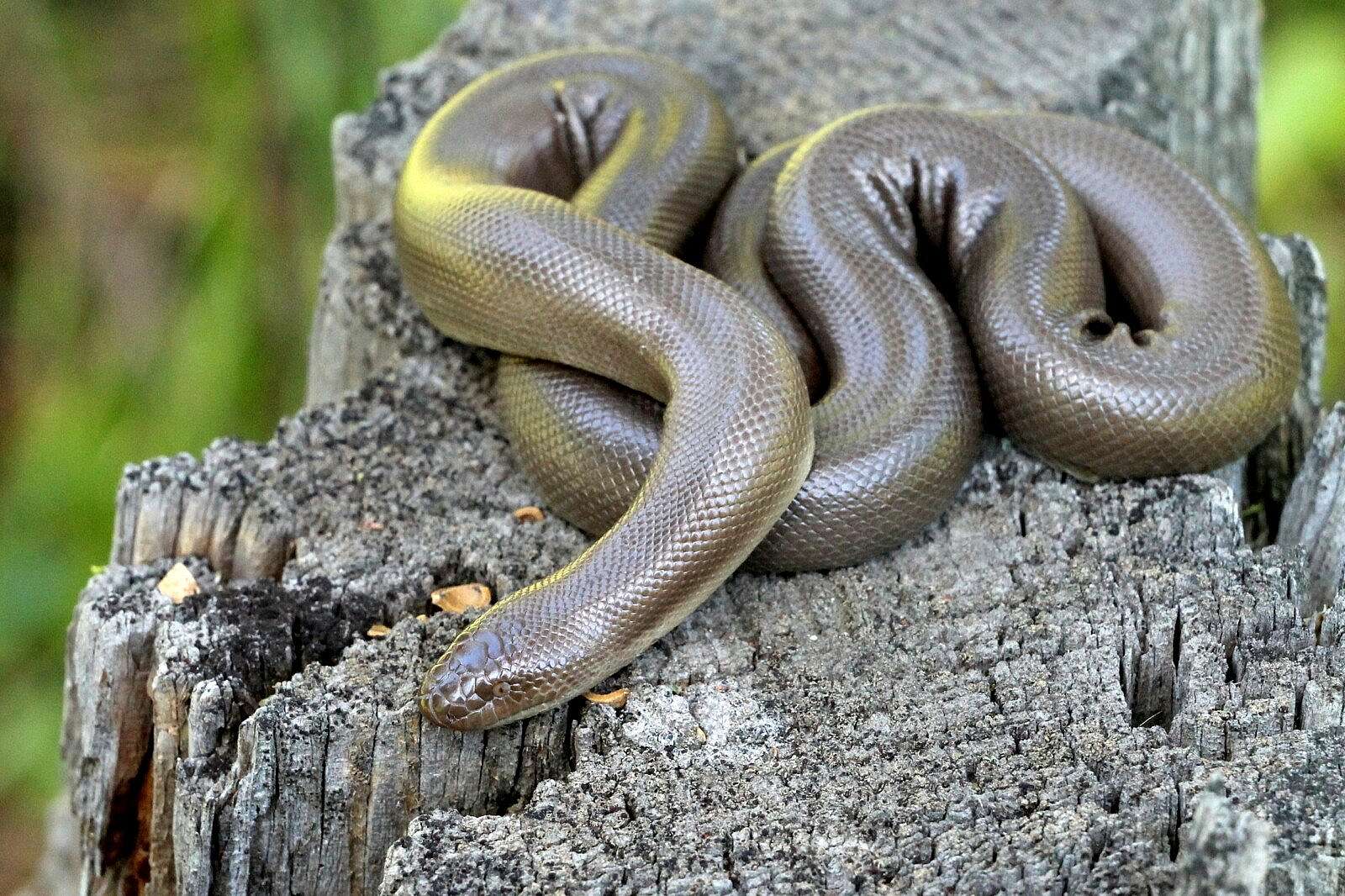
©randimal/ Adobe Stock #66316578
The Basics: Nature’s Living Gummy Worm
Rubber boas get their name from their smooth, loose skin, which – paired with their oddly flexible bodies – makes them look more like a discarded party balloon than a fearsome predator. They’re small, usually maxing out around two feet in length, and their coloration ranges from olive-green to brownish, blending in well with soil and leaf litter. While they may look soft and cool to the touch, it’s best to admire them from a respectful distance and let them go about their business undisturbed.
Life History: The Chillest Snake in the Rockies
Rubber boas are the cool, easygoing hippies of the snake world. Unlike their high-strung rattlesnake cousins, rubber boas rarely bite. In fact, their go-to defense mechanism is wrapping themselves into a coil and hiding their head, sticking out their blunt little tail instead. To the untrained eye, it looks like they have two heads—one to confuse predators and one to keep all their important thoughts safe.

©Yuval Helfman/ Adobe Stock #444578755
These snakes are also known for their slow-moving, deliberate nature. While other snakes slither away at breakneck speed, rubber boas kind of just . . . meander. If snakes had theme music, theirs would probably be a soft acoustic guitar tune played at half-speed.
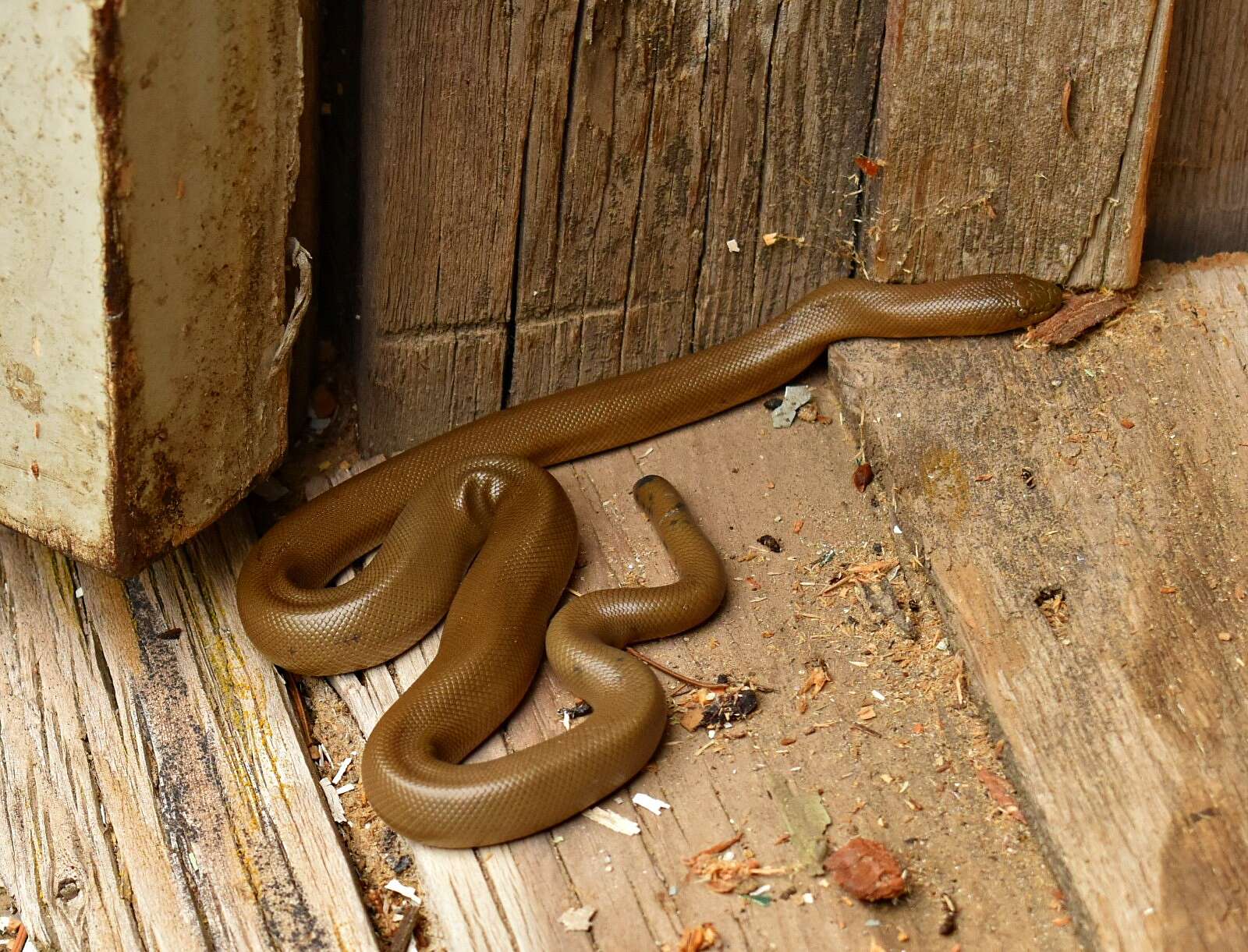
Reproduction: Slow and Steady Wins the Race
Rubber boas take their time when it comes to love. They reach sexual maturity at around 4 to 5 years old – practically middle-aged in snake years. Mating occurs in the spring, and females give birth to live young in late summer or early fall. Unlike egg-laying snakes, rubber boas keep their developing babies inside until they’re fully cooked, delivering anywhere from two to nine tiny, noodle-like offspring.
Newborn rubber boas are pale and pinkish, looking even more like little gummy worms than their adult counterparts. Despite their adorable debut, they’re independent from the start, slithering off to begin their slow-motion adventures on their own.
Range and Habitat: The Masters of Hide-and-Seek
Rubber boas are found in the western United States, stretching from California to Montana and up into British Columbia. Within the Greater Yellowstone Ecosystem, they prefer cool, moist environments – think forest edges, rocky outcrops, and beneath logs where they can stay hidden. They’re nocturnal or crepuscular (active at dawn and dusk), which makes them even trickier to spot.
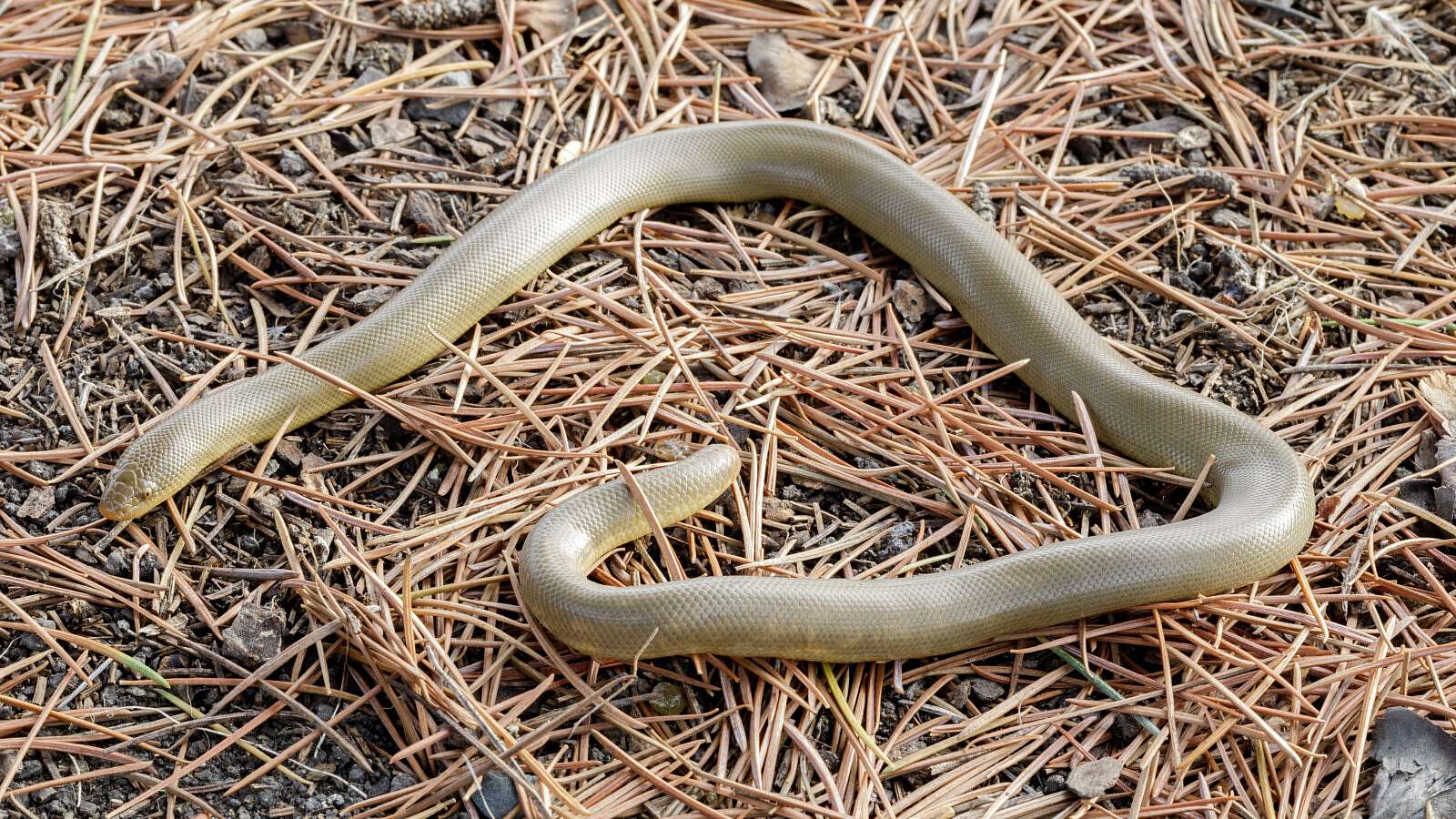
©Yuval Helfman/ Adobe Stock #444578768
They’re also excellent burrowers, tucking themselves into soft soil or under rocks during the day. So, if you ever flip over a log and find one curled up like a forgotten sock, count yourself lucky!
Diet: Not a Great Babysitter
Rubber boas have a surprising favorite food: baby rodents. Using their small but mighty constriction skills, they subdue pinky mice and other nestlings, helping to keep rodent populations in check. Interestingly, mama mice don’t take too kindly to this and will often fight back. That’s why some rubber boas have battle scars – tiny bite marks on their tails from protective mother mice trying to save their young.
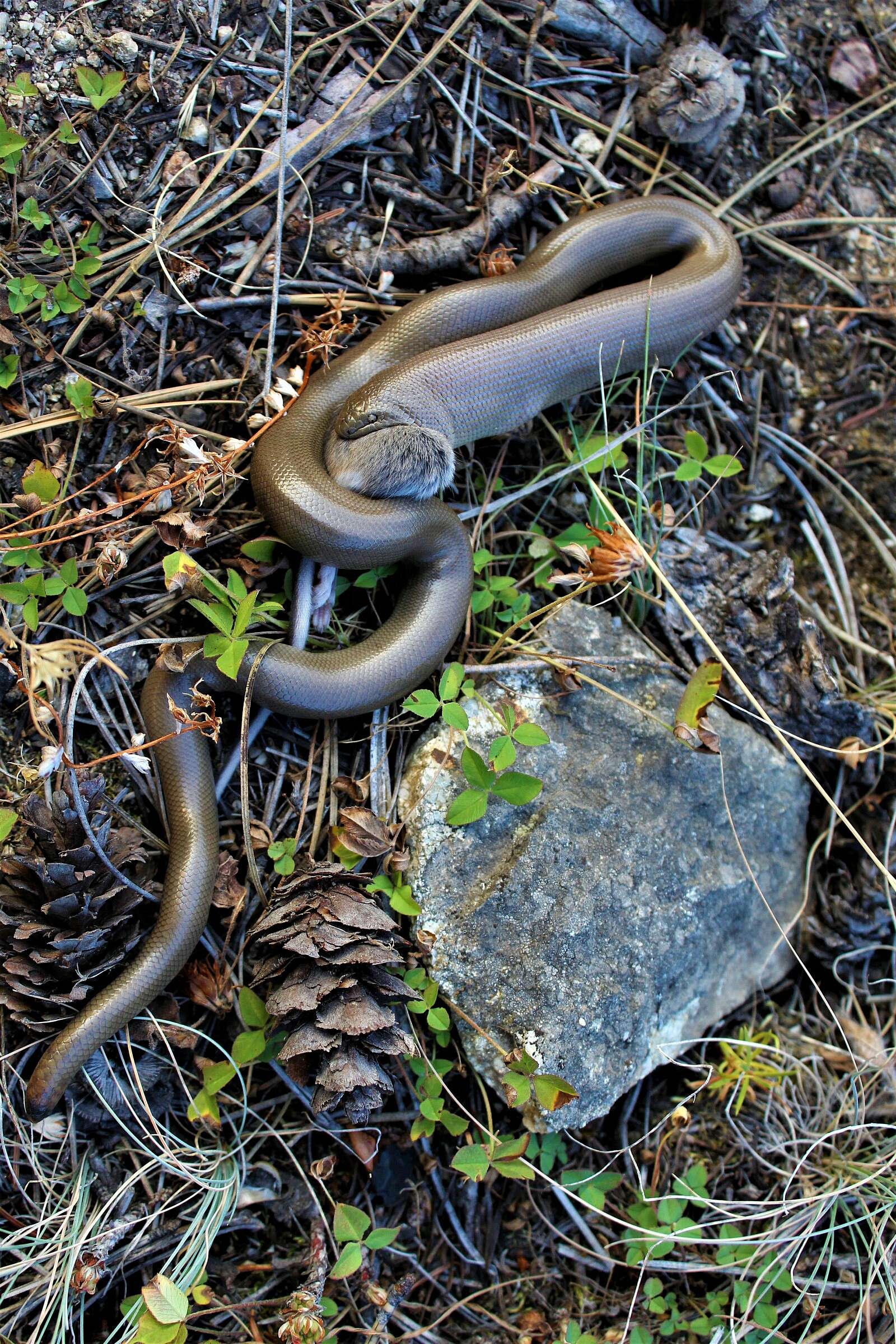
©RJ Rodley/ Adobe Stock #425772991
Beyond rodents, these snakes also enjoy lizards, amphibians, and the occasional snake. However, they’re not picky eaters, and since they have a slow metabolism, they don’t need to eat often – making them one of the most relaxed predators in the region.
Final Thoughts: The Friendliest Snake You’ll Never See
Rubber boas might not be as famous as Yellowstone’s grizzly bears or wolves, but they’re just as fascinating – if significantly less toothy. These gentle, secretive snakes play an important role in the ecosystem, controlling small mammal populations and providing a food source for larger predators.
So, if you’re out exploring Yellowstone and come across what looks like a living shoelace, take a closer look. You just might have found one of the softest, squishiest, most endearing reptiles in the Rockies. And if you do, be sure to wish them well on their slow, noodley journey.
Written By
Melissa Hill
While earning her Bachelor's Degree in Wildlife Management at the University of Wyoming, Melissa began volunteering at Laramie Raptor Refuge and was instantly hooked on birds of prey. Since those early days, she has worked with nearly 70 different raptors at four different raptor education groups in three states. She is a former member of the Education Committee for the International Association of Avian Trainers and Educators (IAATE) and a National Association for Interpretation's Certified Interpretive Guide. When she's not "playing with the birds" she enjoys spending time quilting, crocheting, and exploring the Greater Yellowstone Ecosystem with her non-bird family.

